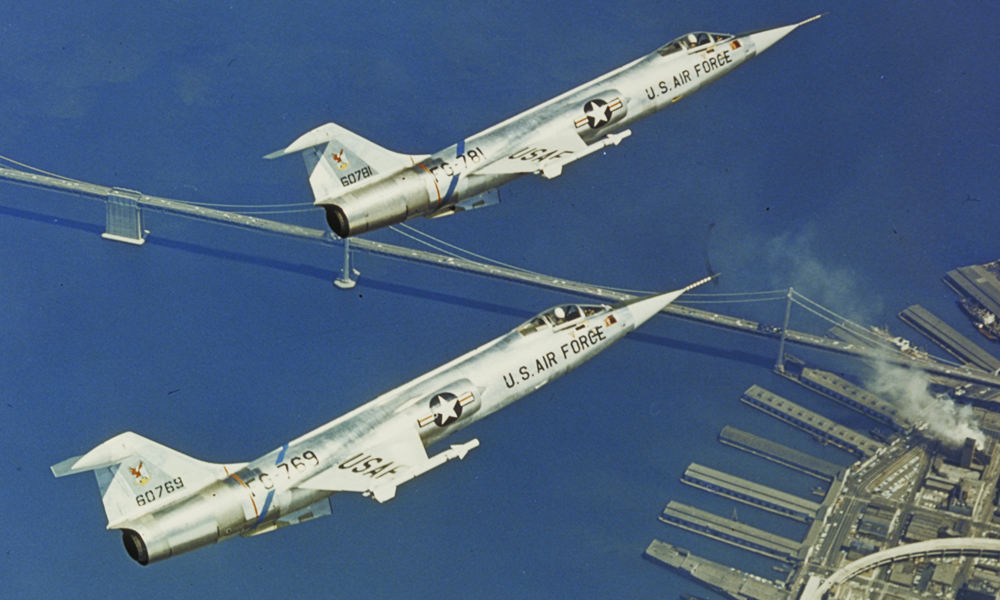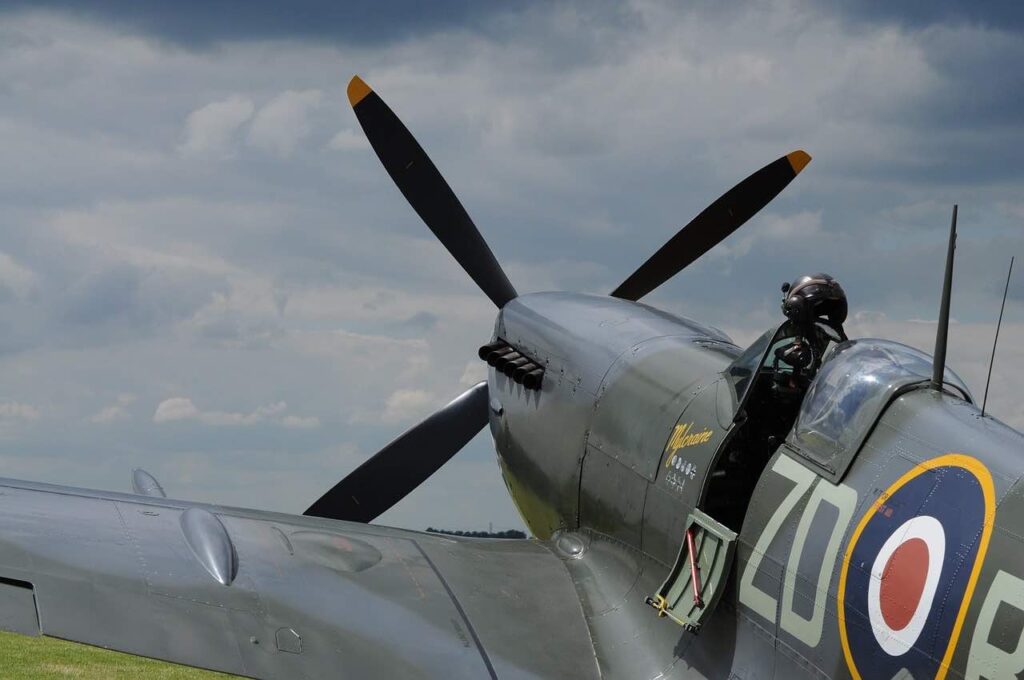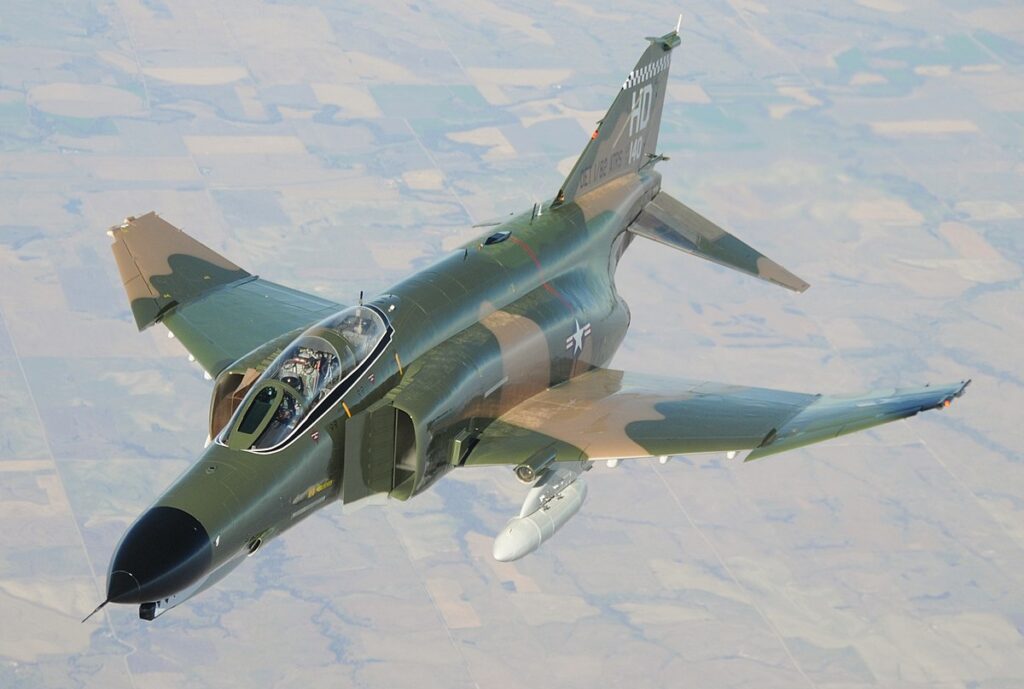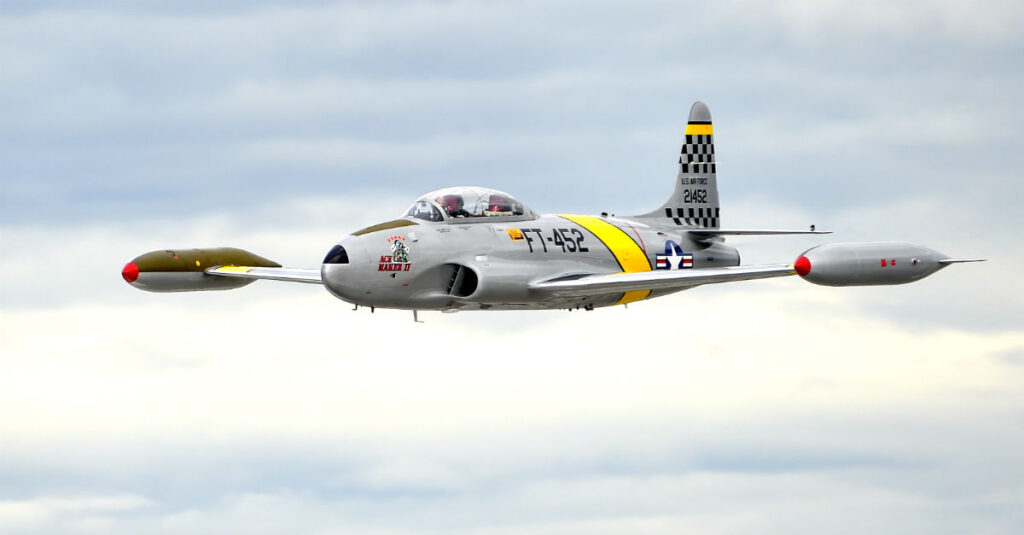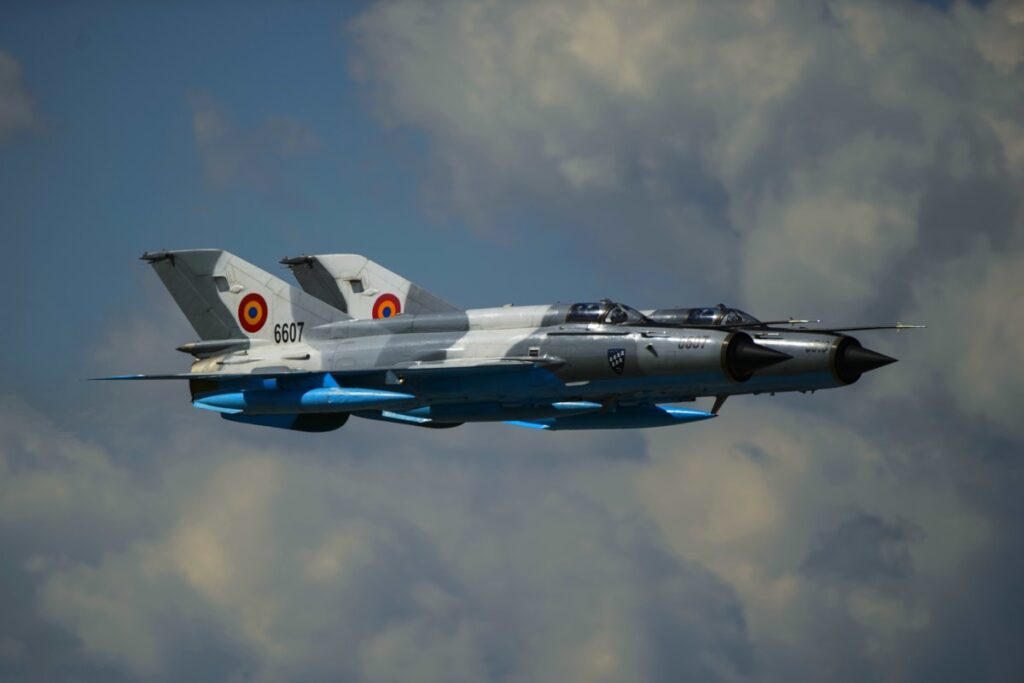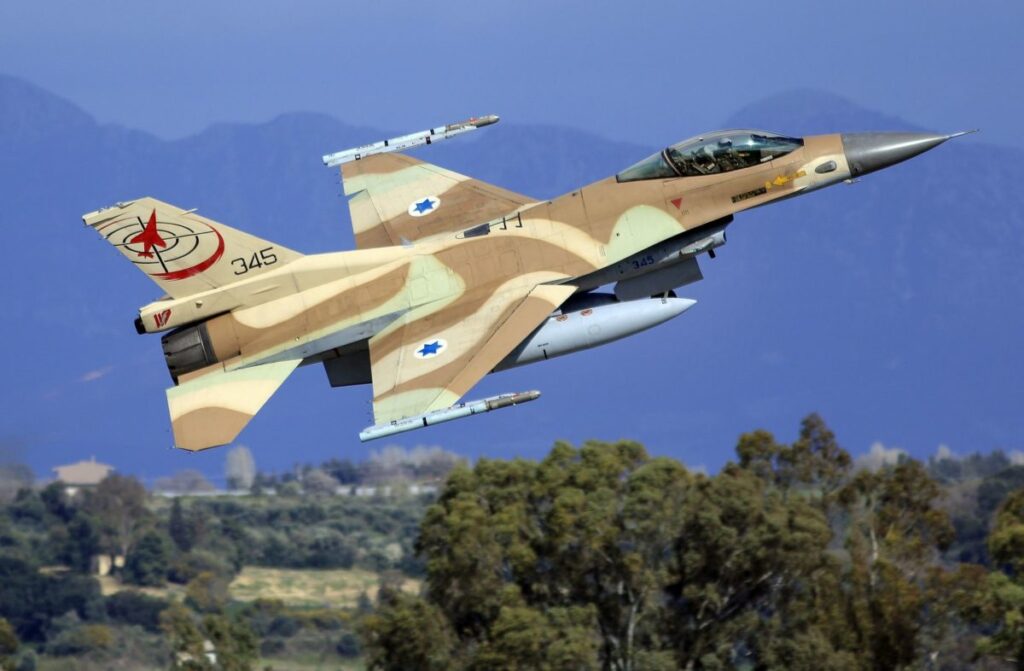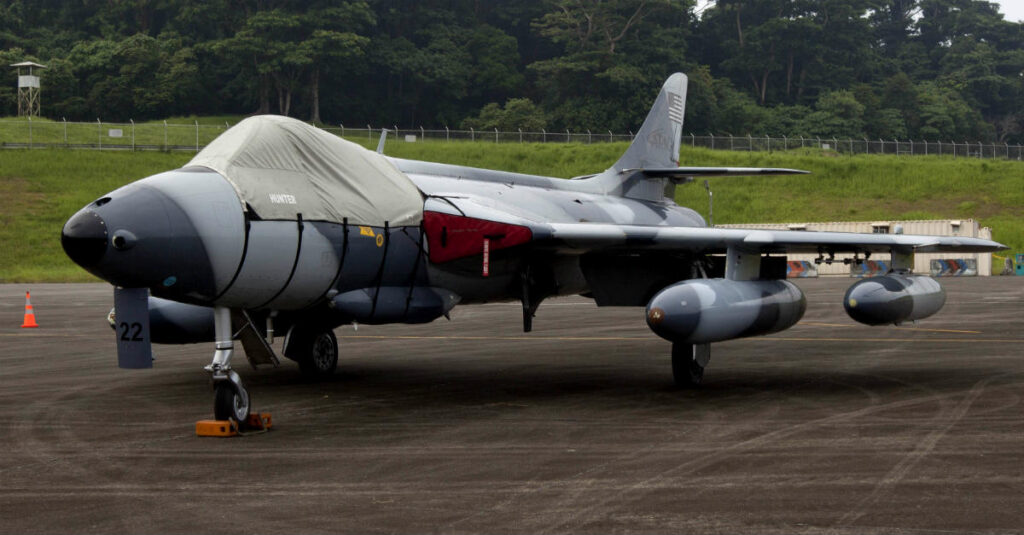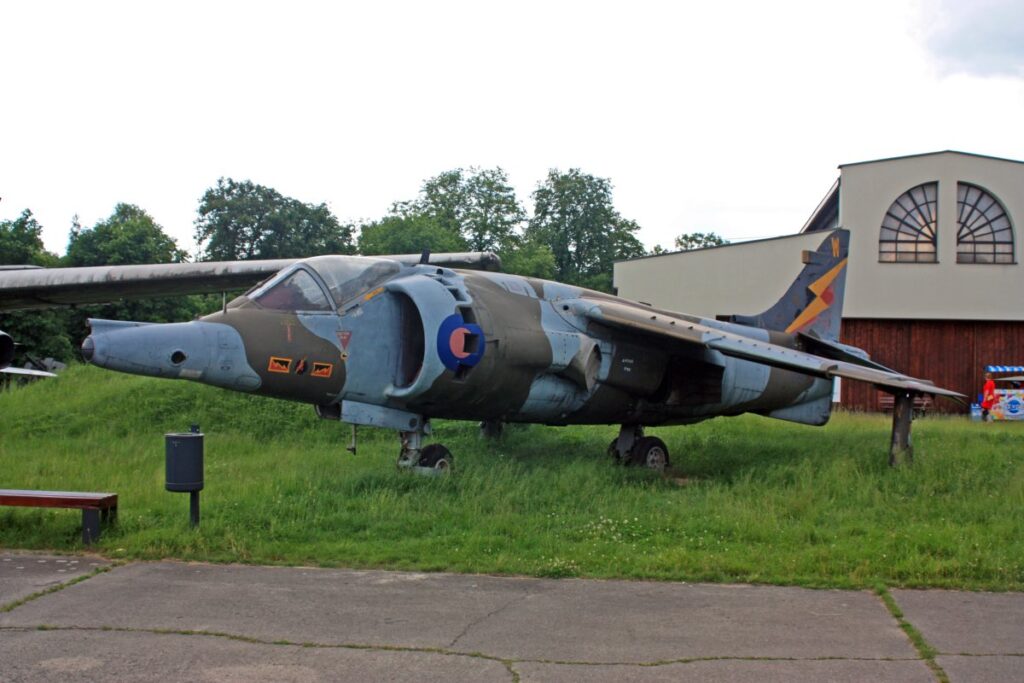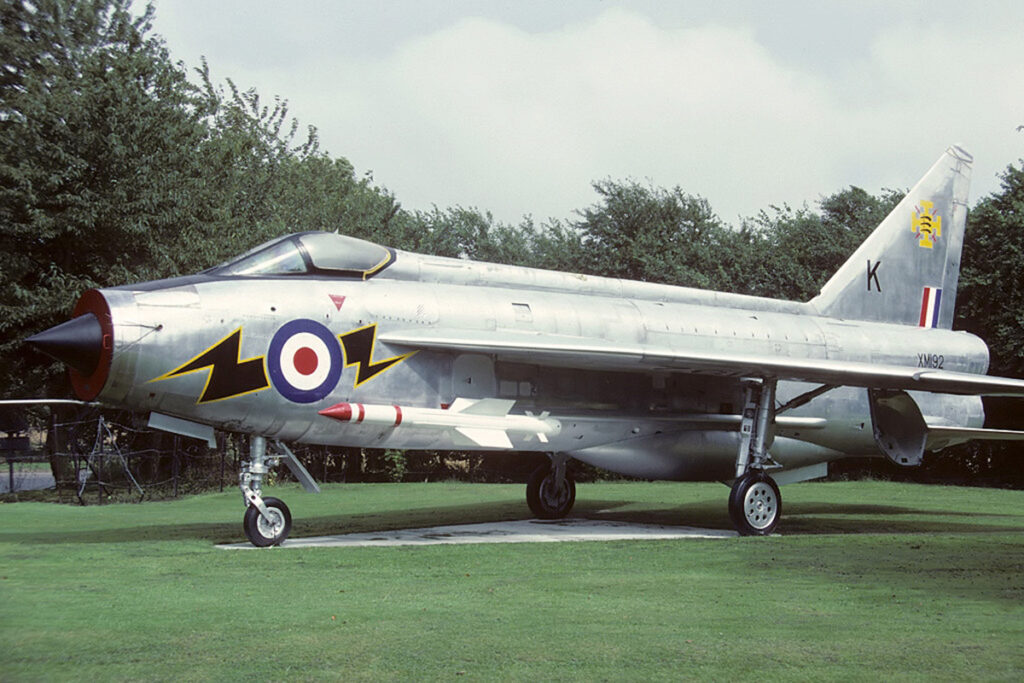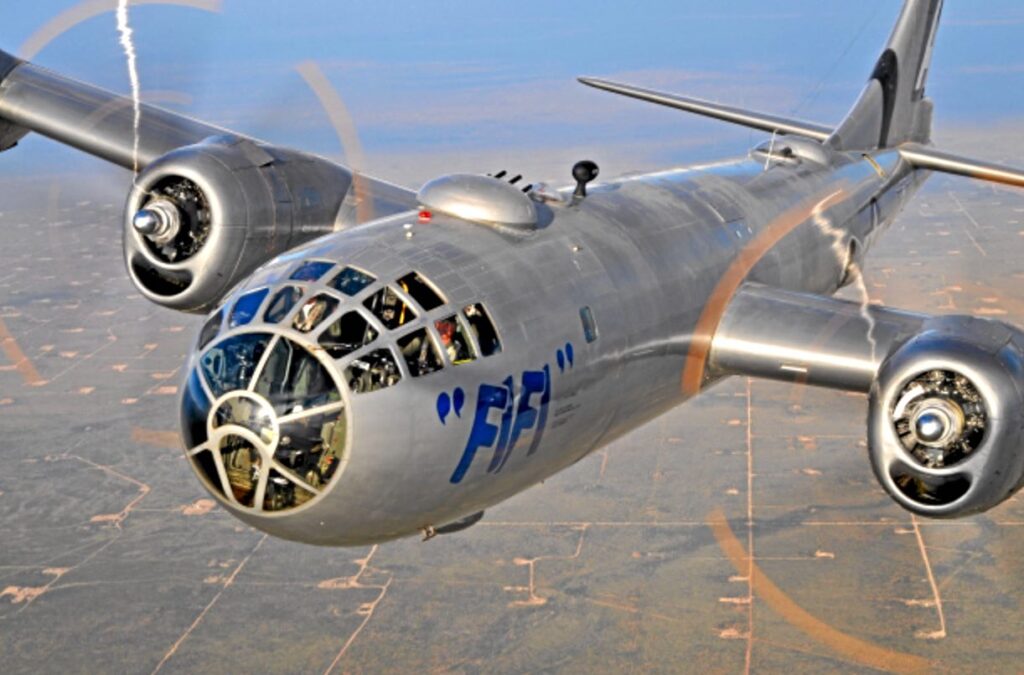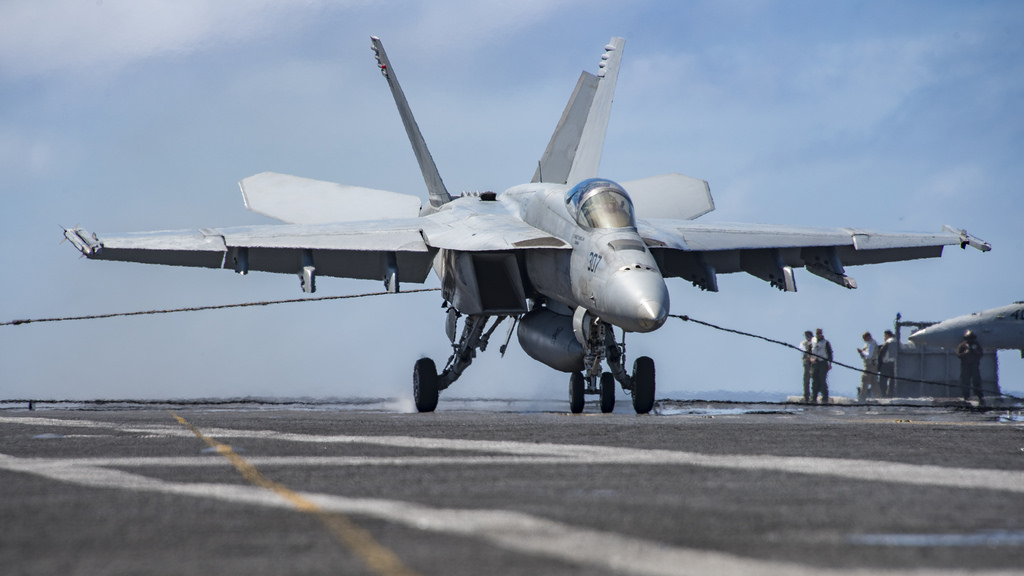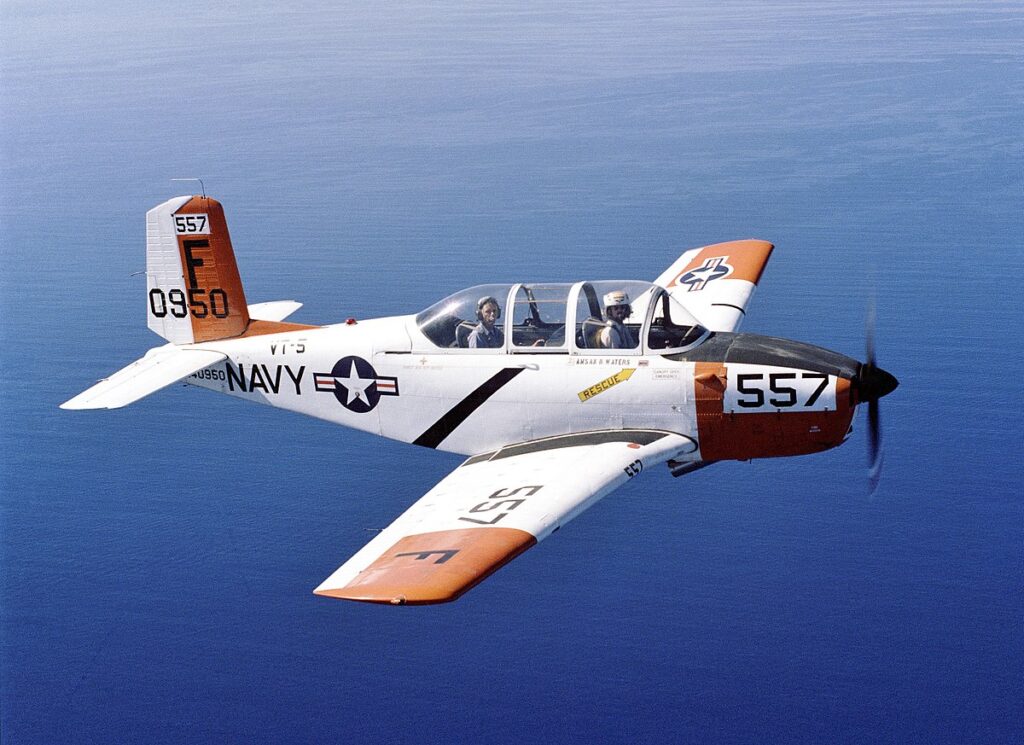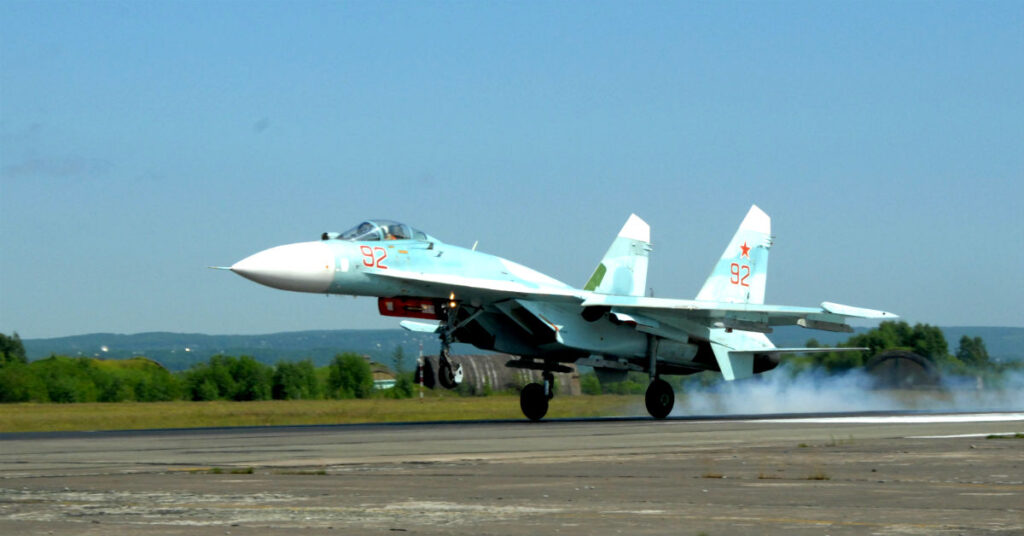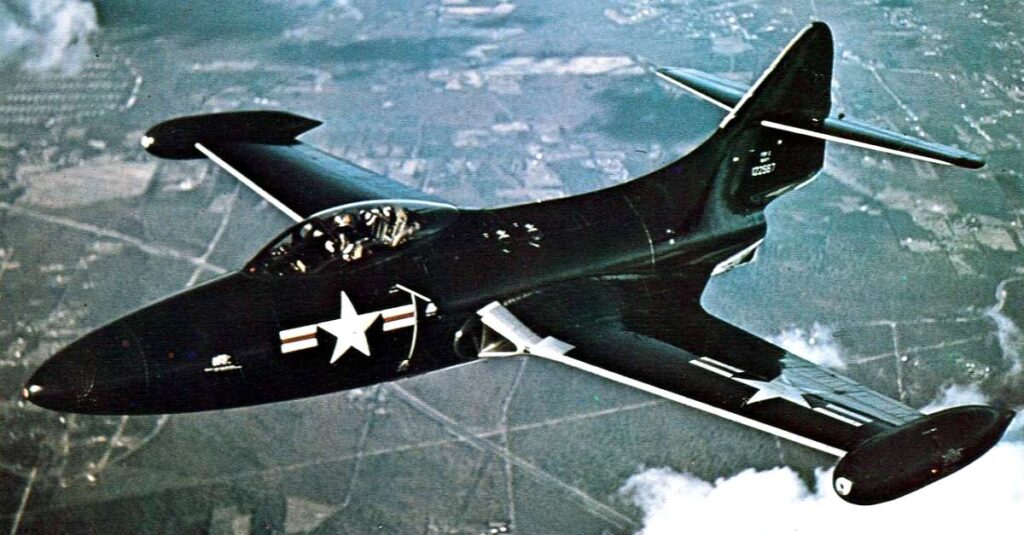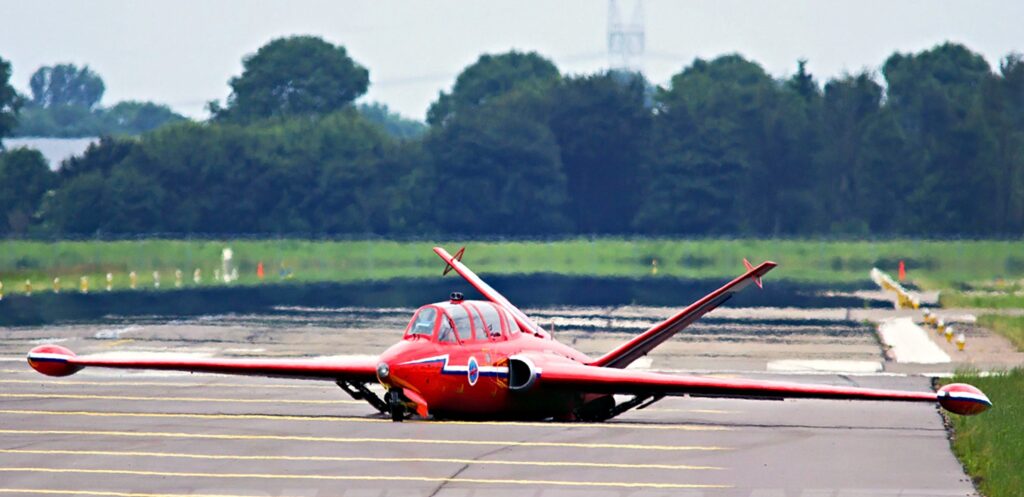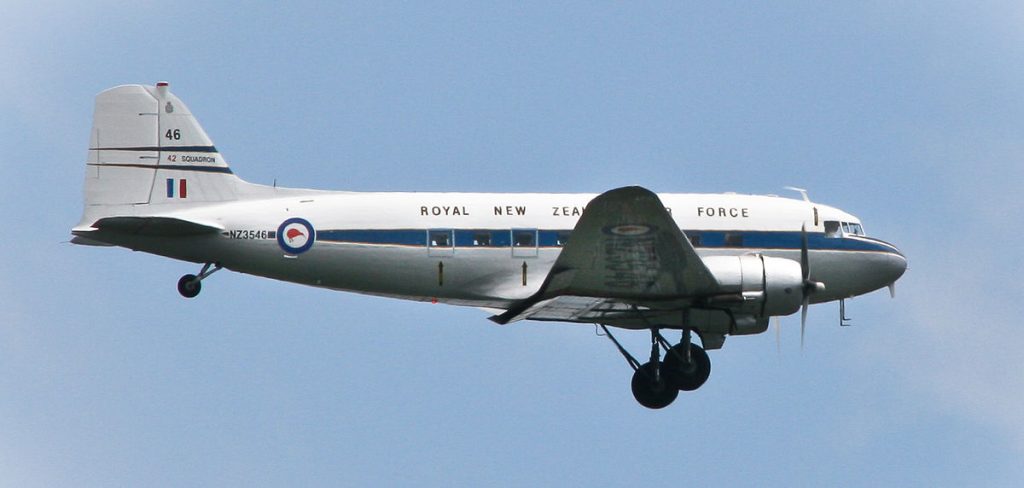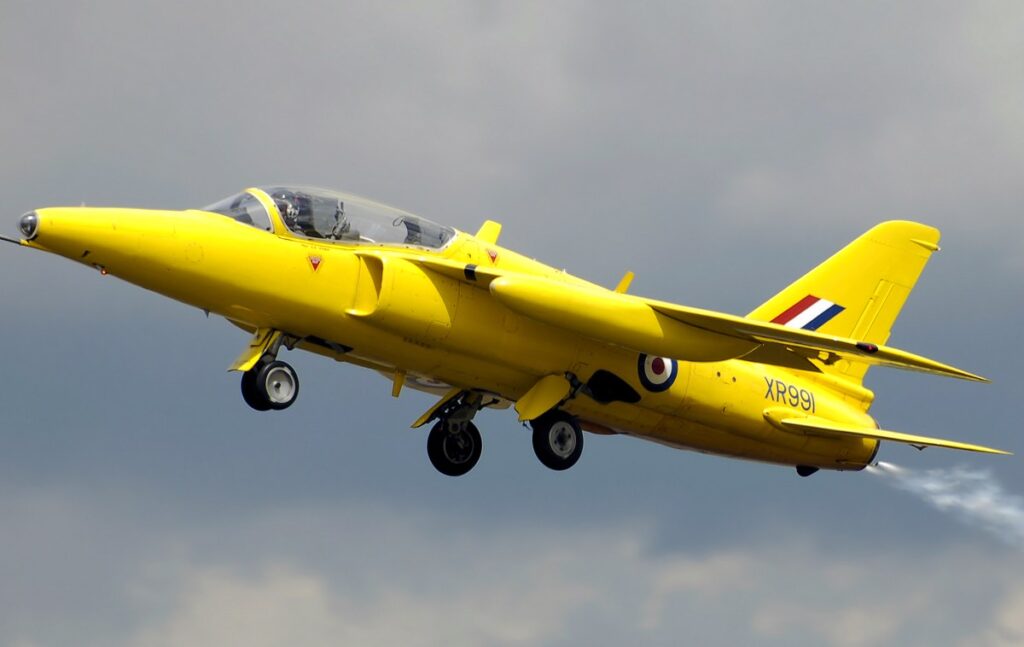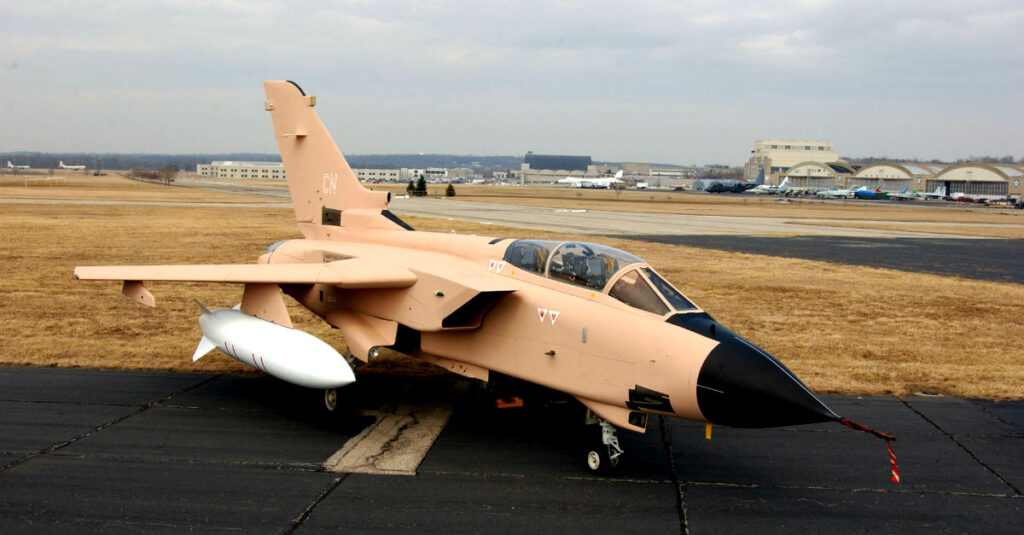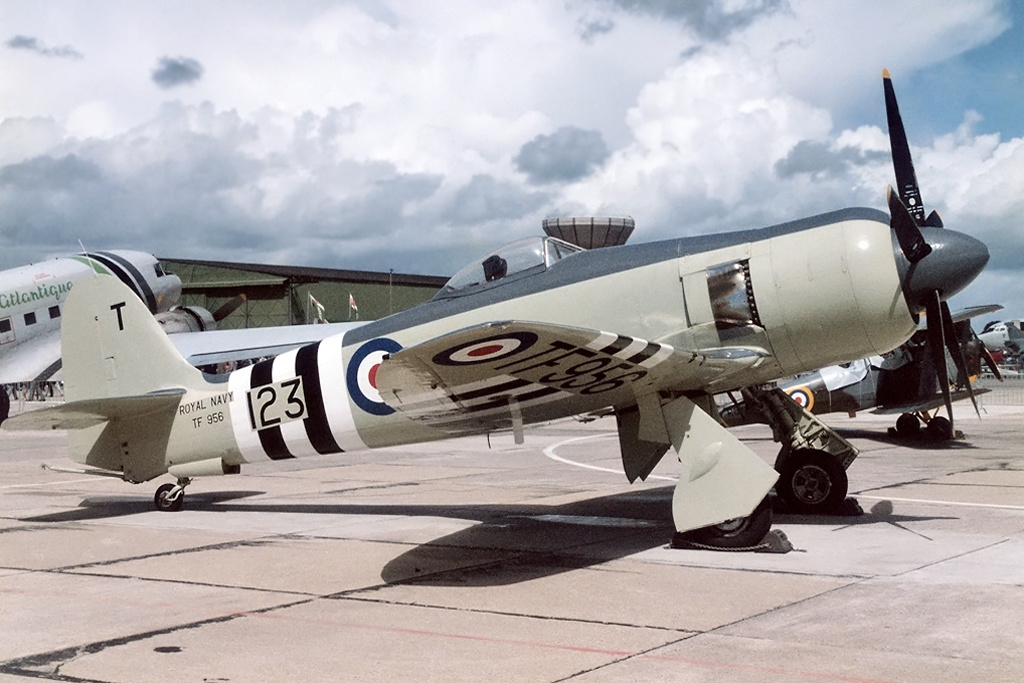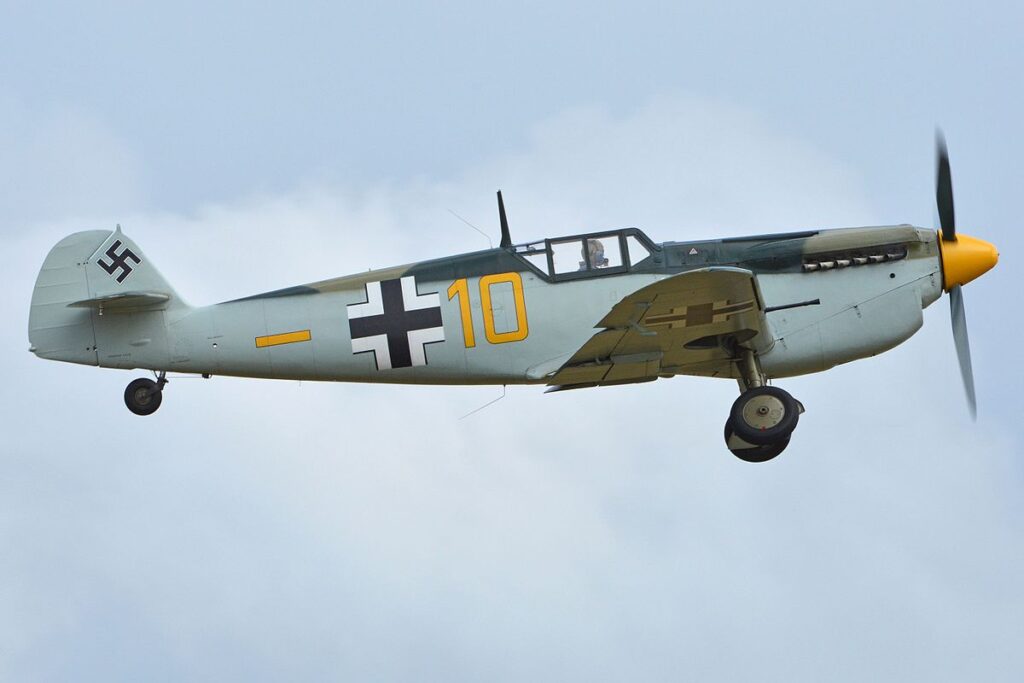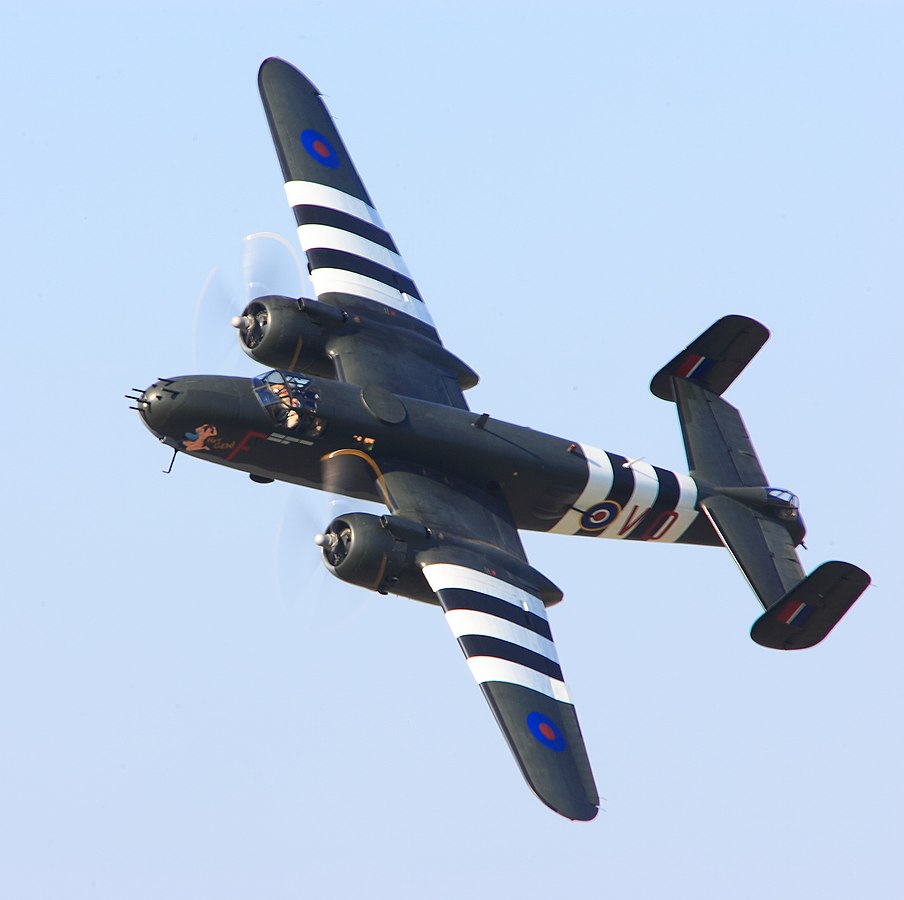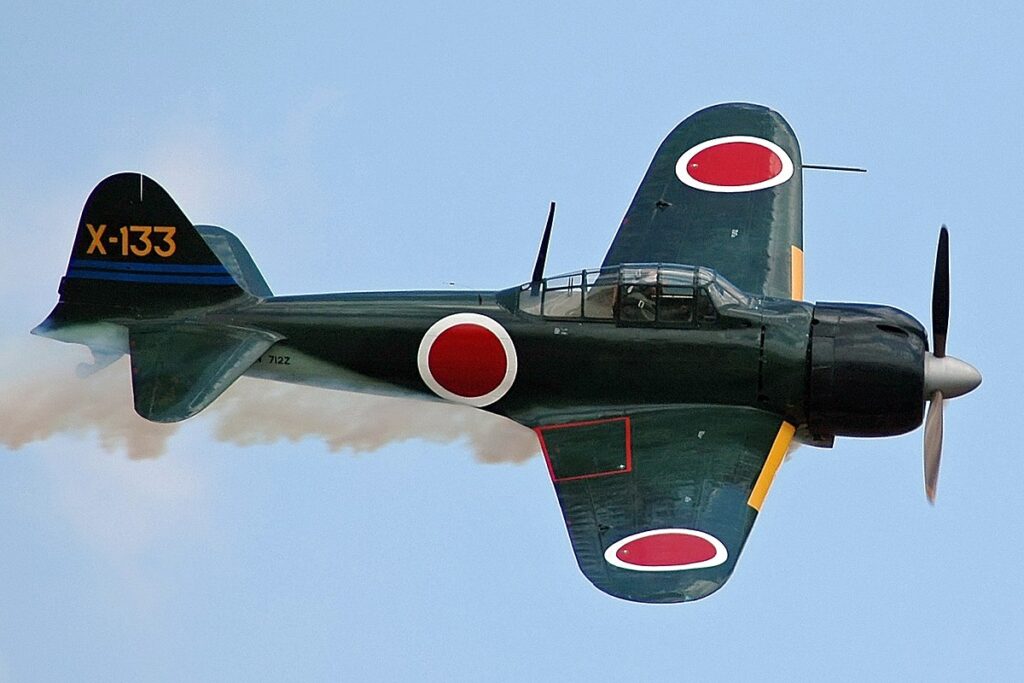Military Aircraft For Sale
Most people have no clue that almost anyone can purchase decommissioned military aircraft. As manufacturers produce new generations of aircraft and militaries phase out older ones, many become available to the public. Even some aircraft still in operation in militaries can be purchased. From massive transport aircraft to nibble fighter jets, we’ve compiled a list of some of the cool and powerful military aircraft that civilians can buy. We’ve provided a photo and as much information as possible with each aircraft. We believe everyone will enjoy this article so much that they’ll be sure to share it with others. So without further ado, here are some of the great military aircraft for sale to civilians. Please enjoy.
Lockheed F-104 Starfighter
The Starfighter was developed with help from renowned aeronautical engineer, Kelly Johnson. Johnson was also involved in the development of the U-2 spy plane and the SR-71 Blackbird. This military aircraft for sale proved particularly deadly to operate and was plagued with controversy during its operational lifetime.
The Starfighter was developed with help from renowned aeronautical engineer, Kelly Johnson. Johnson was also involved in the development of the U-2 spy plane and the SR-71 Blackbird. This military aircraft for sale proved particularly deadly to operate and was plagued with controversy during its operational lifetime. Nonetheless, according to the FAA, there are ten privately owned F-104 Starfighters in the US. Three of which are ex-Canadian military aircraft belonging to the civilian demonstration team, Starfighters Inc. of Clearwater, Florida. In 2011, there was a restored, albeit engineless, F-104 for sale in the UK for £25,000.
North American P-51 Mustang
The P-51 Mustang is a North American classic, originally built for the British during the 1940s global conflict as a medium-altitude fighter. However, the Mustang performed much more than those duties. The addition of the Rolls Royce Merlin engine (and later the Packard V-1650-7), allowing it to reach higher altitudes with greater power. The Mustang was key in reconnaissance missions.
Also, it escorted many bombers throughout several conflicts thanks to its long-range capability. The P-51 has recently become a highly sought after warbird with complete, historically accurate restoration becoming an industry of its own. With a max speed of around 430 miles per hour, this military aircraft for sale is sure to deliver a good time for those lucky enough to get in the pilot’s seat.
Supermarine Spitfire
The most-produced aircraft by the British during the 1940s global conflict, the Supermarine Spitfire was also the only aircraft produced continually throughout the friction. The Spitfire had several different variants with several different wing designs, but an esteemed 50 Supermarine Spitfire’s remain airworthy today.
TMany consider the Spitfire to be the single-most important aircraft in the 1940s global conflict, specifically for its success in the Battle of Britain. Its role in the Allied victory makes this a highly sought-after military aircraft for sale civilians. We know we want one.
F-4 Phantom II
The F-4 Phantom II is one of the rare jets on this list. It entered service with the U.S. Air Force back in 1960 and is still used in limited, spot roles by the USAF although it is technically retired. It’s listed as a two-seat, twin-engine, long-range supersonic jet interceptor and fighter-bomber.
In an age where aircraft engineering possibilities were changing every second – the Phantom II debuted with a bang. Its top speed over Mach 2.2 combined with its ability to carry over 18,000 pounds of munitions struck fear into a lot of its enemies.
Curtiss P-40 Warhawk
Also known as Tomahawk, Kittyhawk, Model 81 and Gypsy Rose Lee (depending on where someone was and which P-40 model was in question), the P-40 was an active participant in the 1940s global conflict. It was one of the top three most plentiful US fighters of the conflict. The P-40 experienced a long list of upgrades during its active lifetime as performance issues and shortcomings became apparent.
Despite these changes, the P-40 isn’t commonly regarded as a “top fighter” of its time but there is no denying its cool looks. This is one of the reasons it has become a desirable warbird for enthusiasts around the world. This particular model is quite rare. The P-40 went down in aviation history books as being an aircraft that handled well for very skilled pilots. However, it left them wishing they had something a little better. Basically, it looked better than it performed making it perfect for wealthy enthusiasts looking for a pretty aircraft to add to their collection.
Northrop F-5
The Northrop F-5 is a lightweight supersonic jet fighter with multiple models made since its introduction in 1962. It was acknowledged for its simplicity, low maintenance cost and effective air to air and air to ground capabilities. Additionally, the aircraft was heavily exported and became a staple for a multitude of Allied nation’s militaries.
In fact, it remains in service as a training aircraft for the US military. As a supersonic jet fighter, the F-A Freedom Fighter maxes out at over 1,000 miles per hour, making this plane one of the faster military aircraft for sale. If someone plans on owning AND flying one of these, they’ll probably need to get their hands on a Talon T-38, a training aircraft also developed by Northrop, that is directly based on the F-5.
Bell UH-1 Huey
The UH-1 Huey is one of the most widely used military helicopters in the world. 40 different countries operate it today. However, that doesn’t make owning one any less exciting. They first came onto the scene during the conflict in Vietnam, and the helicopter assisted in a wide variety of missions. Some variants of the Huey acted as MedEvac, some transported supplies and personnel, and some engaged in air assault.
Cruising speed is around 125 miles per hour, and the crew consists of between 1 and 4 people, depending on the variant. The UH-1 Huey grew to be an iconic symbol of the conflict in Vietnam through movies and television, and for the right price, someone can get this military aircraft for sale, and it’s a steal compared to Huey’s latest versions.
Lockheed T-33 T-Bird
The development of the first jet fighter, the Lockheed P-80 Shooting Star, brought about big changes for pilots in the USAF. These new planes were not propeller-driven, and as such handled very differently especially during takeoff and landing. The existing propeller-driven trainers were not effectively preparing pilots for the turbojet-powered P-80s. So it was decided to elongate the P-80 fuselage to add a second tandem seat.
The result was the Allison J33-A-35 turbojet powered T-33 Shooting Star, the first USAF jet fighter training aircraft. While the P-80 only saw production of around 1,700, the T-Bird proved much more scalable on the military market and around 7,000 were produced for a number of nations around the world. Some militaries still use the T-33 but it is estimated that around 50 of them are in the hands of civilian operators.
Douglass A-4 Skyhawk
The Douglas A-4 Skyhawk was originally developed to replace the A-1 Skyraider for the US Navy. Douglas Aircraft’s Ed Heinemann was the chief design engineer of the project. He designed a small, lightweight aircraft that was simple yet effective. The avionics are in the nose, the engine is in the fuselage, and the fuel is in the wings.
Heinemann’s aggressively compact bomber was later nicknamed “Heinemann’s Hot Rod”. The Navy began using the Skyhawks just after the 1950s conflict in Korea, and soon they were being delivered to the Marine Corps as well. By the conflict in Vietnam, there were at least two A-4 Skyhawk squadrons in all carrier wings performing light air attack missions regularly. The A-4 was also the first to debut the concept of “buddy” air-to-air refueling. It is still in active service with non-US countries, but that doesn’t mean that someone can’t find their own A-4 on the US civil register.
Mikoyan-Gurevich MiG 21
The Mikoyan-Gurevich MiG 21 has been a staple in military air forces around the world since its introduction in 1959. Primarily used by the Soviet, Indian, and Libyan Air Forces, the MiG 21 was the first successful Soviet aircraft to perform both intercepting and fighting capabilities effectively. It held a number of world records including its rank as the most produced supersonic aircraft in history.
Despite still being used by some military forces today, the MiG 21 is a military aircraft for sale that can be purchased for private ownership all over the world. It’s estimated that somewhere around 10,000 MiG 21s were produced by the Soviet Union and their allies over the last forty years. According to the FAA, there are 44 aircraft for sale in the United States alone. Three are located in Portland, Oregon at Premier Space Systems which perform public and private sub-orbital atmospheric space launch services.
General Dynamics F-16 Fighting Falcon
Lockheed Martin’s F-16 Fighting Falcon is a multi-role, single-engine fighter jet. It is common for the aircraft to perform superiority and air support. Many labels the F-16 as a fourth-generation fighter after Lockheed made significant upgrades to its design and avionics deck.
The F-16 can accomplish precision attacks in all weather conditions. The aircraft includes the first avionics suite, which allows the F-16 to do low-altitude missions in lousy weather and see its targets. Thanks to its single thrust engine and lightweight design, the F-16 can perform 9 G worth of force.
Hawker Hunter
The MK-58 Hawker Hunter was originally built for the Royal Air Force (RAF) as a fighter jet in the late 1940s and early 1950s. Later, it would transition into intelligence gathering and fighter-bomber roles. Both single and double pilot versions were created. The aircraft was heavily exported, serving in a large number of other military units around the world. It officially retired in 2014 and now enjoys “warbird” status.
Maxing out at just under 700 miles per hour and regarded as one of the great early fighters (the UK produced around 2000 of them), military aviation enthusiasts would be happy to get their hands on one of these military aircraft for sale. If someone has the funds, they aren’t all that hard to locate. Most Hawkers that are still in existence are owned by groups who perform aerial demonstrations. Some are contracted by the military for use as target training and threat stimulation.
Aeo L-39 Albatross
No other former military aircraft is more synonymous with “warbird” than the L-39 Albatros. It was developed by Aero Vodochody in Czechoslovakia as a training aircraft. It was the first Second Generation jet trainer to be produced. Also, it’s pretty easy to see why the Albatros has become such a popular civilian enthusiast military aircraft for sale.
Maxing out at just under 700 miles per hour and regarded as one of the great early fighters (the UK produced around The sleek design combined with its relative ease of care and operation make it a go-to purchase for those with deep enough pockets. The specs go something like this: 40 foot long with a 31-foot wingspan, Ivchenko-Progress AI-25TL high-bypass turbofan engine with around 3800 lbs of thrust, a range of over 650 miles and it can fly for two and a half hours with internal fuel only.
Grumman OV-1 Mohawk
The Grumman OV-1 was developed in the 1950s as a replacement for the Cessna L-19 Bird Dog. The US Army needed an all-weather observation/attack plane that was faster, more powerful and outfitted with better armor than the Bird Dog. Grumman Aircraft Corporation won the project with their OV-1 Mohawk concept. It proved to be in a league of its own.
The Mohawk was the first turboprop plane to be active in the US Army. It proved highly useful in a variety of military roles. Its aluminum-alloy floor and bullet-proof windows protected it from small ground arms. Its large finned tail and mounted engines allowed for superior maneuverability. At least one OV-1 variant had an internal camera and advanced side-looking radar (SLAR) which scanned the ground below and provided tracking that no other aircraft could match at the time. The OV-1 was finally retired from the US Army in 1996, but it remains one of the most exciting military aircraft for sale that civilians can get their hands on.
Hawker Sidldeley Harrier GR.3
The Hawker Siddeley Harrier was developed by Hawker Siddeley for the Royal Air Force (RAF) in the 1960s. The vertical/short take-off and landing (V/STOL) concept was repeatedly attempted during this time period. The Harrier was the first to be successful. The RAF ordered both the GR.1 and GR.3 variants and a slightly modified version known as AV-8A was exported to the United States Marine Corps (USMC) in the 1970s.
The GR.3 was a single-engine, single-seat jet measuring 46 feet in length with a 25 foot wingspan. It was powered by a Rolls Royce Pegasus 103 turbofan. Four vertical flight puffer jets utilized engine bleed air, mounted in the nose, tail, and wingtips. Due to its V/STOL capability, the Harrier didn’t require long runways and ground facilities like that of other fixed-wing aircraft. The aircraft proved important and effective in the 1980s conflict in Falklands. It was retired from RAF in 2011 and some of these military aircraft for sale can be found on the open market.
English Electric Lightning F1A
English Electric introduced the Lightning F1A to the Royal Air Force (RAF) in 1960. They primarily used it as an interceptor. The Lightning includes a twin-engine arrangement with low-mounted tailplane and delta wings. The Lightning came equipped with an AL.23 monopulse radar which became increasingly outclassed during its lifetime.
Despite this, the Lightning F1A received considerable attention for its fast and high climb rates. It could reach 20,000 feet (6096 meters) per minute. The aircraft’s peak is unknown, but some suspect it to be as high as 60,000. Ultimately, the RAF retired the Lightning F1A in 1988.
F80 Shooting Star
The P-80 Shooting Star was the first jet fighter used by the United States Army Air Force officially introduced in 1945 as the F-80. Though it did see combat operations, the military quickly replaced it with the F-86 Sabre. The P-80 retired from service in 1959.
Despite new aircraft swiftly outclassing the P-80, it played an essential role in bringing in the “jet age” for the U.S. Development began in 1939. With Allied intelligence of the Me262 and British jet aircraft research in 1943, Lockheed produced an airframe in only 143 days and a prototype the following year.
Supersonic Tupolev Tu-144
The Supersonic Tupolev Tu-144 was a Soviet supersonic passenger airliner. This plane operated from 1968 to 1999. When Tupolev released the Tu-44, it was the first supersonic transport aircraft. Unfortunately, dependability problems, rising fuel prices, and two significant mishaps took Tu-44 out from regular use.
The Soviet Union ultimately canceled the program for commercial use in 1983. However, they were not done with the Tu-144 just yet. The aircraft entered the Soviet space program to train pilots of the Buran spacecraft until 1999. NASA also used the T-144 for supersonic research.
C-130 Hercules
In 1951, The United States Air Force wanted a new transport aircraft with a large carrying capacity with cargo doors to carry heavy vehicles and many passengers. Lockheed answered the call with the C-130 Hercules with a maximum load of 72,000 lbs. (32658.65 kilograms) and a takeoff weight of 155,000 lbs. (70306.81 kilograms). It had a maximum speed of 366 mph. The design was so good, as of 2021, it remains in active service in the U.S. military.
People looking for a 1958 Lockheed Hercules could find one that appeared available on Controller dot. Cargo system: Complete LAPES roller system, the only one in the world in civilian hands. Troop seats: Complete set of troop seats (96), including complete stanchions for litters. AirDrop Capability: All components for paratroop operations.
B-29 Superfortress
The B-29 Superfortress was a beast of a plane, even by today’s standards. It was developed in the early 1940s by Boeing and its advanced features put the new bomber in a league of its own. Some interesting features include pressurized crew areas that could be accessed by crew members in flight, removing the need for masks. It was a heavy production plane.
The B-29 Superfortress had its first flight on September 21st, 1942. It can fly up to 5,800 miles which allowed it to cover a large area over the Pacific Ocean during the 1940s global conflict. The aircraft is around 99 feet (30.17) long with a wingspan of 141 feet 3 inches (43.05m), and could reach speeds of 365 mph.
Boeing F/A-18 Hornet
Don Kirlin, a pilot and real estate agent in Illinois, purchased not one but multiple squadrons worth of surplus Royal Australian Air Force (RAAF) F/A-18 Hornets to be used in the contractor adversary air support role here in the United States. They priced out to be roughly $5 million per unit.
The McDonnell Douglas built the F/A-18 Hornet. They designed the aircraft to be a multipurpose jet, including a fighter and air defense. The F/A-18 has twin engines, giving it supersonic capabilities, and it also is all-weather capable. The jet entered service in 1974 and, as of 2021, is still used in militaries in all around the world.
Beechcraft T-34 Mentor
The Beechcraft T-34 is an American military trainer aircraft that uses a single-engine. In the 1940s, Walter Beech headed the project to create a cost-saving alternative trainer for the U.S. military. In its life, the T-34 saw many variants to keep it up–to–date. As of 2021, the military still uses this aircraft.
The T-34 entered service in 1953. The first version used a Lycoming O-470-13 piston engine, while upgraded versions used turboprop engines. Currently, a Continental E185 Piston aero-engine powers the aircraft. Two crew members can operate it, and the current T-34C can have a cruise speed of 246mph.
Sukhoi Su-27
Within the last decade, the Soviet-era Sukhoi SU-27 became an aircraft for sale to civilians. This military aircraft was built by the Russians to compete with the Fourth Generation F-14s and F-15s. Its impressive stats make for an exciting civilian aircraft. With twin engines, super maneuverability, and a top speed of Mach 1.8, this fighter jet will give someone the ride of their life. It’s also unusually large.
While it was built to rival the F-15, it comes in at over 10 feet longer and 5 feet wider than its competitor. All ten of the weapons hardpoints are removed and protected radar technology is stripped for civilian sale. The fuel is carried internally, so this stripped version of the SU-27 is the light and fast.
Migoyan-Gurevich MiG-29
Like the Sukhoi Su-27, the Mikoyan MiG 29 was developed by the Soviet Union to combat the American F-16 in the 1970s. The MiG 29 is a large fighter, measuring 57 feet in length with a 37-foot wingspan. It is powered by twin turbofan engines and can reach Mach 2.25 at high altitudes. The MiG proved to be capable of a multitude of roles. Its intended purpose was air to air combat. However, it also was used in air to surface and precision targeting. Once the Soviet Union dissolved, it left the former members with a surplus of the aircraft.
They have been exported to over 30 other nations, with India topping the list as a large export operator. The US even purchased a small fleet from Moldova to get a better idea of the MiG capabilities (and to keep them out of the hands of Iran). If someone thinks they might like to own a Soviet Era jet fighter, they can purchase their own military aircraft for sale in the shape of a MiG 29. Let’s be real. Not everyone is going to buy this aircraft for themselves.
Grumman F9F Panther
The F9F Panther was the first jet fighter developed by its manufacturer, Grumman. Single-engined with straight wings, the Panther was a capable day fighter with the ability to carry a wide array of air to ground weapons. It was one of the first successful carrier-based jet fighters for the US Navy. This aircraft for sale saw heavy action in the conflict in Korea, performing nearly half of the attack missions for the Marine Corps and the Navy.
In fact, the Panther has a long lists of “firsts”. It gained the first air to air kill for the US Navy in Korea. Also, it was the first military aircraft for sale to be used by the famous Blue Angels flight team. The F9Fs were mostly pulled from front-line service in the mid-1950s but some were used for training purposes in the following few years. If someone is lucky enough to own a flyable Panther, they are in slim company as there are only two privately owned F9Fs in the US, with only one being airworthy.
Fouga Magister
The French manufacturing company Fouga designed the CM.170 Magister in the early 1950s. The goal for the company was to build a jet that could meet basic and intermediate training standards. Fouga officially introduced the Magister into the French Air Force in 1956.
By 1960, 350 Magisters entered service. The CM.170-1 could reach a max speed of 444mph (386 km) at 30,000 ft (9,100 m). The aircraft also occasionally served close air support in combat. Eventually, the Dassault/Dornier Alpha Jet replaced the trainer with the French Air Force retiring it.
Douglass DC-3
Looking back on it, the DC-3 was one of the aircraft that really changed the industry. The cargo/transport aircraft took that duty to new heights – carrying 21 to 32 passengers or 6,000 pounds of cargo with a range of 1,500 miles – something that previously was not an option.

Civil production on the DC-3 ended in 1942, but several hundreds if not thousands are still in flying condition today.That longevity is a testament to Douglas’ engineering and quality. The DC-3 was reduced the C-41 for military purposes and served as a VIP transport aircraft. The Secretary of War often times utilized the C-41.
Folland Gnat
The Folland Gnat was a small yet capable fighter jet that was developed by the British in the 1950s. Also known as the “Pocket Fighter”. This little plane had some very impressive performance features that solidified its place in several nation’s air forces around the world. The Gnat could climb at 10,000 feet-per-minute and roll at more than 360 degrees per second.
It was a highly agile, maneuverable and fast aircraft for any military at the time. The British decided to employ it as an advanced training aircraft soon after ordering the first six test aircraft. However, the Gnat went on to fulfill fighter roles in Finland, India, and Yugoslavia. It was particularly successful in India during the conflict with Pakistan. In Finland, the Gnat set a record for the country as being the first to exceed the speed of sound. The Gnats have been retired from military service for some time now.
Aero L-29 Delfin
Czechoslovakian manufacturer Aero Vodochody released the jet trainer Aero L-29 Delfin in 1961. Development began in the 1950s when the Soviet Air Force wanted to replace its fleet of piston-engine trainers with something jet-powered. Coincidentally Czechoslovakia was also looking for a replacement for its trainer.
Aero answered the call with their aerospace engineers Z. Rublič and K. Tomáš, who headed the project. They presented an aircraft that could meet advanced and straightforward training protocols. The L-29 had a Motorlet M-701 turbojet engine with a simple design where the mid-wing matched a T-tail layout. The aircraft operated in the Soviet, Czechoslovak, Bulgarian and Egyptian Air Forces.
Saab 35 Draken
A powerful fighter jet that could go toe to toe with bombers at high altitudes and effectively combat enemy jet fighters needed. Therefore, Swedish manufacturer Saab developed the 35 Draken. Its unique design included a double delta shape, allowing the jet to be optimized for both high and low-speed performance. One of the requirements set forth by the Swedish Defense Material Administration was the ability to complete short takeoffs and landings. Saab designed the aircraft to be able to perform tail-down landings in order to achieve that goal. The Draken was first fully supersonic fighter used in Western Europe.
It is still used by the Austrian Air Force, but has been retired by Sweden after nearly 40 years of use. It has a presence in the US as a testing aircraft for both NASA and other government agencies. Private ownership of this supersonic jet is possible and the military aircraft for sale has even been featured in Miller beer commercials.
Panavia Tornado
The Panavia Tornado is a fighter jet created from a collaborative effort between the UK, West Germany, and Italy in the 1970s. It was intended to satisfy a multitude of combat roles and became a staple of many European militaries. It is still flying to this day in some of them. Three main variants were produced: the IDS (interdictor/strike), the ADV (air defense) and the ECR(electronic warfare/reconnaissance).
At high altitudes, the Tornado can reach Mach 2.2 speeds and at sea level, it maxes out at around 900 miles per hour. It has been touted for its ease of maneuverability thanks to the variable-sweep wings and pilots enjoy the spacious and surprisingly quiet cockpit. All of these qualities make it an ideal military aircraft for sale for a private owner if someone can manage to get their hands on one.
Dassault Alpha Jet
The Dassault/Dornier Alpha Jet was created as a joint venture between France and Germany. The countries had two different purposes for developing the jet. France was interested in using the Alpha Jet as a training aircraft. Germany intended to use it in light attack missions. The French variant was known as Alpha Jet E and the German variant, Alpha Jet A. The French were very happy with the performance of the E variant. However, some French Air Force commanders claimed it was almost too forgiving in its handling.
This made the transition to fly fighters a little more difficult. The Germans began phasing out the Alpha Jets in the 1990s, selling much of their fleet to other militaries and some to private owners. The famous Flying Bulls acquired four Alpha Jets and routinely fly them in air shows around the world.
Vought F4U Corsair
The Corsair’s success in air-to-air combat against the Japanese Zero aircraft was legendary. Over 12,000 of the American-built fighter plane were produced, and some estimate that there are just shy of 50 left in the United States. The F4U Corsair was built under license by Goodyear at times.
In 1944, the Vought F4U Corsair entered the U.S. Navy with many units. To save space on the carriers, they had folding wings. However, some variants did not have the hydraulic wing folding mechanism, though the crew could manually fold them.
Hawker Sea Fury
The last propeller-driven fighter aircraft ever used with the Royal Navy, the Hawker Sea Fury saw a lot of combat time in the conflict with Korea. It was produced with the 1940s global conflict in mind, but showed up too late to the party. It was also used in the certain 1961 seizure attempt.
It entered service in 1947 and retired from military duty in 1968 with the Burmese Air Force. Several nations flew it over the course of its life, including : UK, Australia, Canada and Pakistan. We would not mind getting our hands on this legend.
Hispano M4L Buchon
Perhaps someone heard of the Hispano Buchon. Perhaps they haven’t, that’s the more likely case here. Messerschmitt’s legendary Bf-109 fighter G-variant was the idea behind the Buchon’s design. Many consider Hispano Aviation’s M4L the ultimate development post-war variant of the Bf-109 family. The M4L served mainly in the Spanish Air Force as a fighter aircraft. After its service life ended, it played a fairly large role in filming scenes for the Hollywood movie, The Battle of Britain.
The Buchon first flew in 1952. A botched deal with Germany left Spain with several unserviceable Bf-109 fighters, the Buchon was Spain’s attempt at creating the pf in a bad situation. It served the Spanish Air Force until 1965. There is currently one Buchon up for sale, but because of its rarity a real price is unknown at this time.
Messerschmidt ME-262
The Me-262 Schwalbe (fighter) or Sturmvogel( fighter-bomber) entered service for the Luftwaffe in 1941 and was retired at the conflict’s end in 1945. It was one of the first aircraft in the 1940s global conflict to feature jet engines, and as such, it was a serious threat in the skies.

Once the conflict was over, captured Me-262’s were put to use as test subjects by the United States. Many aspects of the North American F-86 Sabre were borrowed from the engineering tactics of the Me-262. There aren’t many left, and those that are left are likely a hodgepodge of original and refurbished parts.
P-38 Lightning
Modern aviation enthusiasts likely know all about the F-35 Lightning II, but perhaps not much about the Lightning I. Well, here it is. The P-38 was a piston-engine fighter used during the 1940s global conflict. But its duties went well beyond just a fighter.
The P-38 lightning also held roles such as: photo reconnaissance, interception, level bombing, ground attack, night fighting, radar and visual path finding and as a long-range escort. Countries from all over the world operated the P-38, but the most notable were the USA, Italy, France, Portugal, U.K., China and Australia.
North American T-6 Texan
The North American Aviation T-6 Texan is a two-seat advanced trainer. Most of the Allied pilots who flew in the 1940s global conflict learned at least one thing or another inside a T-6. The Navy referred to it as the SNJ and the British Royal Air Force called it the Harvard.
Overall, the T-6 Texan trained tens of thousands, if not hundreds of thousands, of pilots in 34 different countries over a period of 25 years. 15,495 Texans were made. The T-6 Texan won honors in the 1940s global conflict and in the early days of the conflict in Korea – though it was most famous as a trainer.
1986 SIAI Marchetti S-211
The Italian aviation manufacturer SIAI-Marchetti released the S.211 in 1981. Development began in 1976 as a private venture. The goal of SIAI-Marchetti was to offer a new type of jet trainer to its existing customer base, which mainly used piston-engined trainers.
Demand was strong enough for the company to build two prototypes. In 1983 Singapore Air Force became the first country to order the aircraft, and they initially purchased 10. The S.211 was a shoulder-wing monoplane that used a Pratt & Whitney Canada JT15D-4C turbofan powerplant. While mainly used for training, SIAI-Marchetti also gave it close air support capability.
Curtiss C-46 Commando
Still active in remote locations like the Artic, the C-46 Commando was a military transport/cargo aircraft used most heavily during the mid-1940s. The C-46 was one of the first military aircraft to include pressurized cabins, a novelty at the time. Other aircraft of the same era were the DC-4 and Boeing Stratoliner.
It was used heavily as a paratroop drop plane but as the conflcit ended and many C-46s were lost during drops, it was pulled from that duty. The C-46 doesn’t have a spotless military record by any means, and many inside the armed forces couldn’t stand it.
Grumman G-21 Goose
The G-21 Goose (first flight was in 1937) was Grumman’s first for a lot of things. The G-21 was the first single-wing aircraft, first twin-engine aircraft, and the first aircraft used as a commercial airliner – pretty impressive history right there. Capable on both water and land, this aircraft served for many decades in a variety of roles.
The long-lasting nature of this aircraft is a testament to its engineering and design. The G-21 was designed as an “air yacht” for wealthy New York businessmen, so they could commute from their homes on Long Island to their Manhattan offices. It soon found a market as an airliner, military transport, and utility aircraft.
North American B-25 Mitchell
The Boeing B-25 Mitchell, named after Brigadier General William “Billy” Mitchell, was a twin-engine bomber. However, over time it became much more than just a bomber. The B-25 was a high-level and low-level bomber, submarine patrol and photo reconnaissance aircraft, and even a fighter.
North American Aviation produced just under 10,000 B-25s in a six-year span from 1939-1945. The first B-25 flew in August of 1940 and the US Army Air Corps accepted its first five planes in February of 1941. From there, it was a race to produce as many as possible. North American Aviation totaled 9,816 B-25s between their two plants in California and Kansas.
Canadair CF-5 Freedom Fighter
The F-5 Freedom fighter aircraft represented a breakthrough in air combat technology. It rose to popularity in the 1960s. Its ultra-low radar cross section made the aircraft difficult to spot at long range. The Freedom Fighter was as close of thing the world had to a stealth fighter at the time. This tiny “pocket fighter” was also built from the ground up as nimble dog-fighter.
Most importantly, at least to outnumbered NATO nations facing the vast might of the Warsaw Pact, this fighter was incredibly cheap. It combined most of the hi-tech avionics and performance of more expensive aircraft like the F-4 Phantom with low-operating costs equivalent to the Russian Mig-21.
Mitsubishi A6M “Zero” Resin
The Mitsubishi A6M Reisen (“ree-sin,” Japanese for Zero Fighter) was the quintessential Japanese air power during the 1940s global conflict. The Zero fighter was designed by Mitsubishi but was co-produced by Nakajima. The two companies built more than 10,000 Zeros between 1939 and 1945.
Japanese Navy staff directed Mitsubishi and Nakajima to submit proposals in 1937 for a new aircraft to replace the Mitsubishi A5M carrier fighter. The Zero had legendary numbers in air kills after entering combat service in 1940. The current price for a Zero Fighter is unknown.
Short Tucano Trainer
The Mitsubishi A6M Reisen (“ree-sin,” Japanese for Zero Fighter) was the quintessential Japanese air power during This two-seat turboprop basic trainer aircraft, built by Short Brothers in Northern Ireland, is a license-built Brazilian Embraer EMB-312 Tucano. The Royal Air Force is the primary operator, and it occasionally exports the aircraft to Kenya and Kuwait. A prototype had its first flight in 1986.
The Royal Air Force received the Tucano for the first time in 1988. The Tucano is operated primarily at RAF Linton-on-Ouse. It provides basic fast-jet flying training to RAF and RN student pilots. Student fly roughly 130 hours with the Tucano before progressing to the Hawk T2 aircraft trainer.
